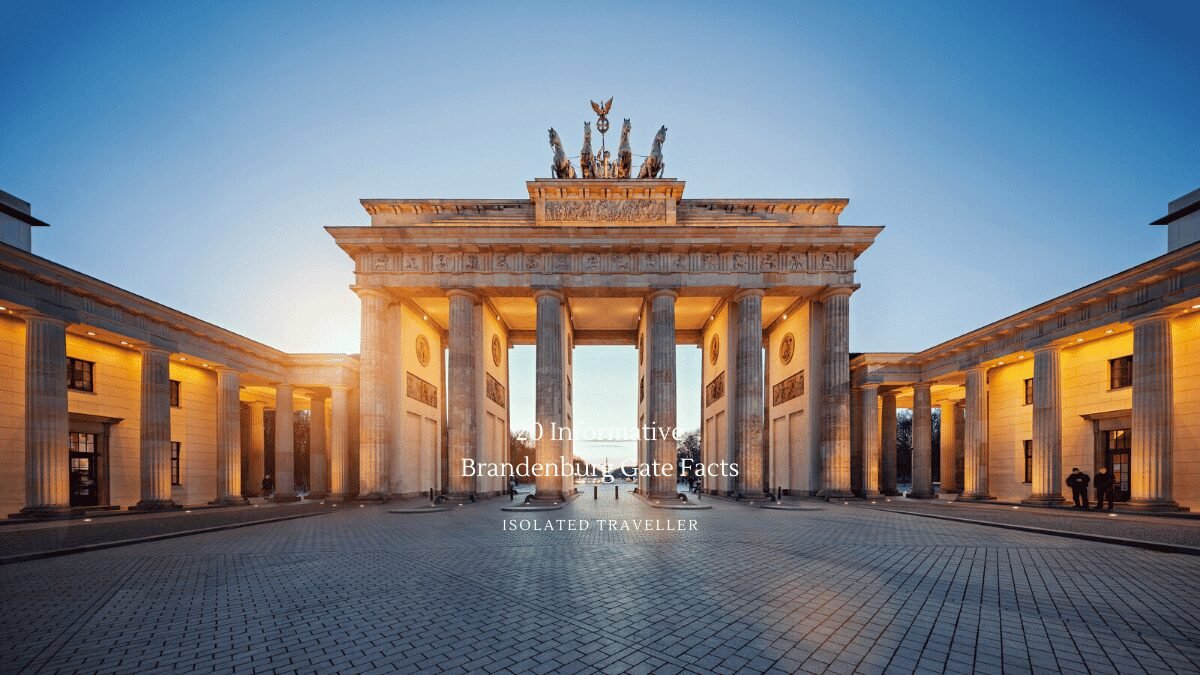Brandenburg Gate Facts
-
Brandenburg Gate is an 18th-century neoclassical monument in Berlin.
-
On December 21, 2000, the Brandenburg Gate was privately refurbished at a cost of US$3 million.
-
A Soviet flag flew from a flagpole atop the gate from 1945 until 1957, when it was replaced by an East German flag. Since the reunification of Germany in October 1990, the flag and the pole have been removed. During the 1953 riots in East Berlin the Soviet flag was torn off by West Germans.
-
After the fall of the Berlin wall in 1989, the gate became a symbol of unity.
-
The Brandenburg Gate was not part of the old Berlin Fortress, but one of eighteen gates within the Berlin Customs Wall, erected in the 1730s, including the old fortified city and many of its then suburbs.
-
Brandenburg Gate became the main venue for the 20th-anniversary celebrations of the fall of the Berlin Wall or “Festival of Freedom” on the evening of 9 November 2009.
-
In 1990, the famous Quadriga statue on the top of the gate was removed as part of renovation efforts by East Germany.
-
Built on the orders of Prussian king Frederick William II after the temporary restoration of order during the Batavian Revolution.
-
In 1963, U.S. President John F. Kennedy visited the Brandenburg Gate. The Soviets hung large banners across it to prevent him looking into the East.
-
The height of the Gate is 26 meters.
-
Built according to the plans of Carl Gotthard Langhans from 1788 to 1791, the Brandenburg Gate is modelled on the Propylaeum of Athens’ Acropolis.
-
The Brandenburg Gate is surrounded by the Adlon Hotel, and the embassies of the United States and France.
-
On January 30, 1933, Adolf Hitler rose into power as Chancellor of Germany. A torchlight procession was done in Berlin to honor him and the Nazi Party, which passed through the gate going to the presidential palace.
-
About one million people traditionally go to the Gate each year to celebrate New Year’s eve.
-
The Brandenburg Gate is flanked by two small buildings, Haus Liebermann and Haus Sommer, which were built in the late 1990s by architect Josef Paul Kleihues to replace the pavilions that were destroyed during World War II.
-
The gate has five passages. The central and widest one was reserved for the royals; the adjacent passages were for use of the aristocracy while ordinary citizens were only allowed to use the outer two.
-
After Napoleon’s defeat at the Battle of Waterloo, the quadriga was triumphantly taken back to Berlin, and was turned into a symbol of victory: an iron cross and eagle were added to the laurel wreath.
-
In 1987, U.S. President Ronald Reagan gave his famous speech “Tear down this wall!” outside of the gate.
-
In 1793, the gate was crowned by the Quadriga statue, designed by Johann Gottfried Schadow.
-
The Brandenburg Gate was Berlin’s first Greek revival building.


